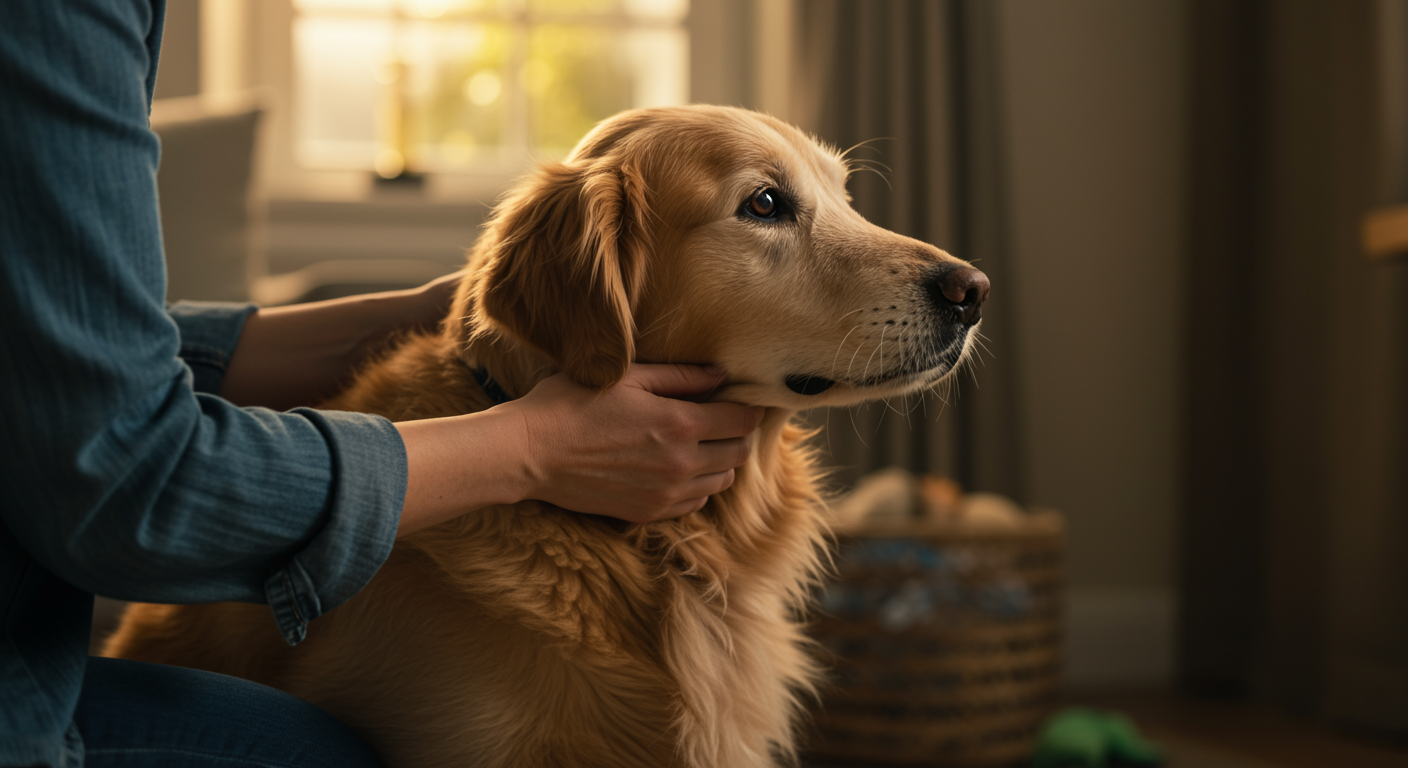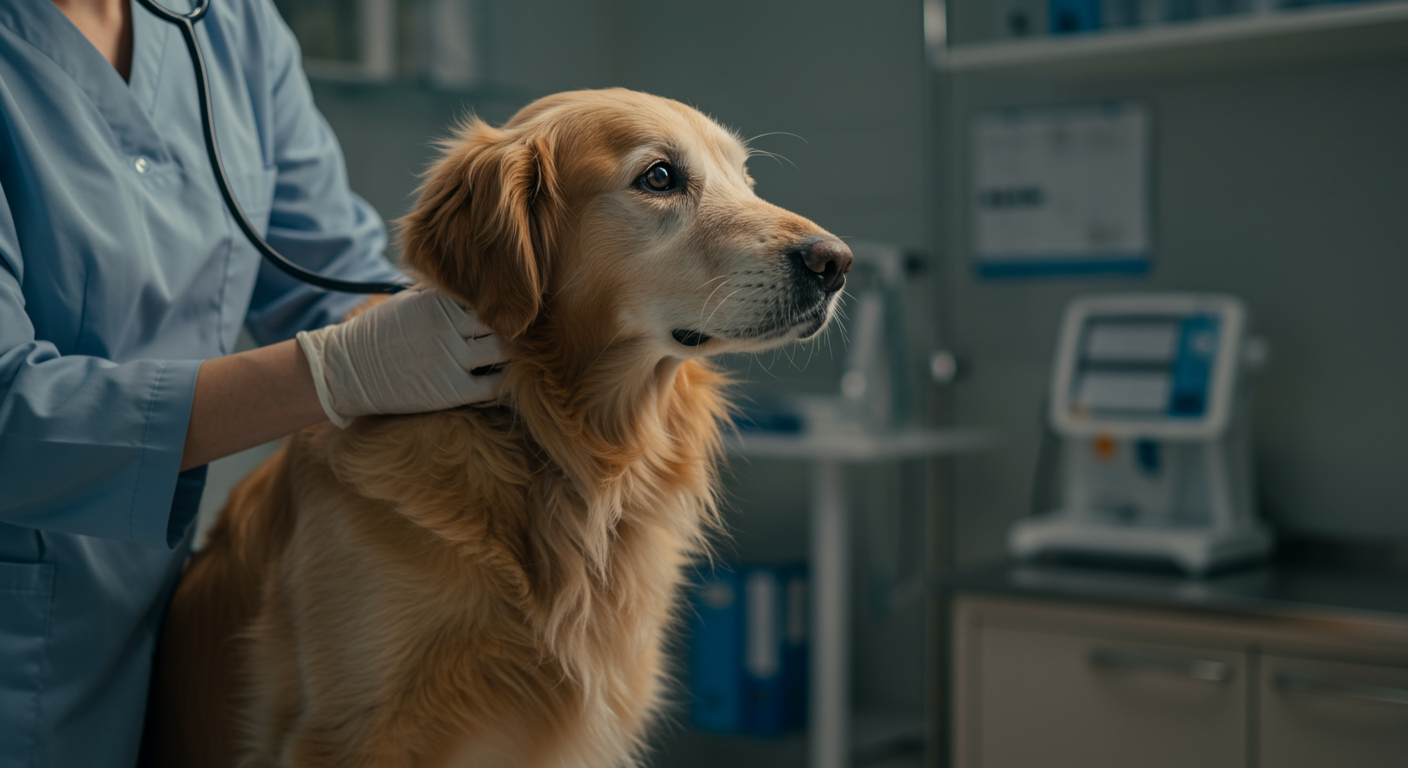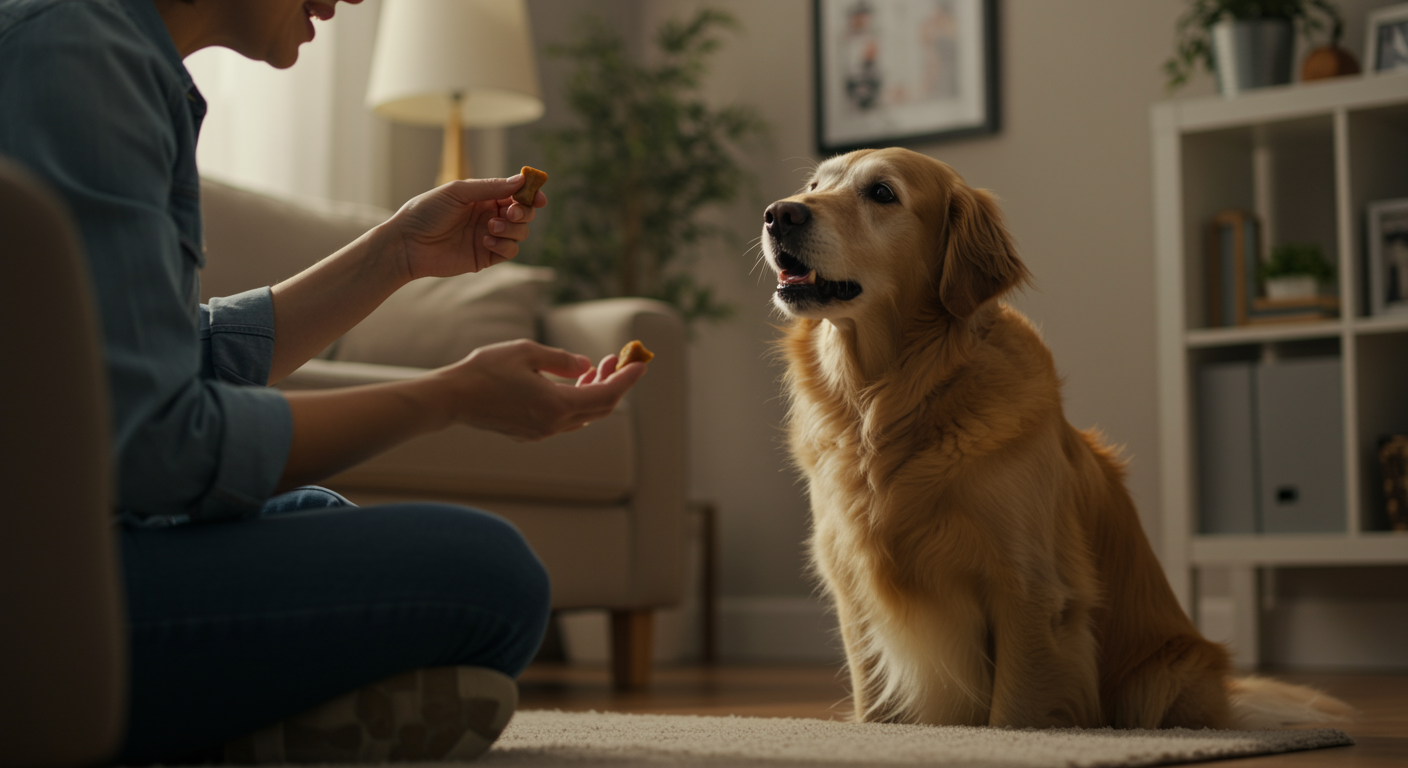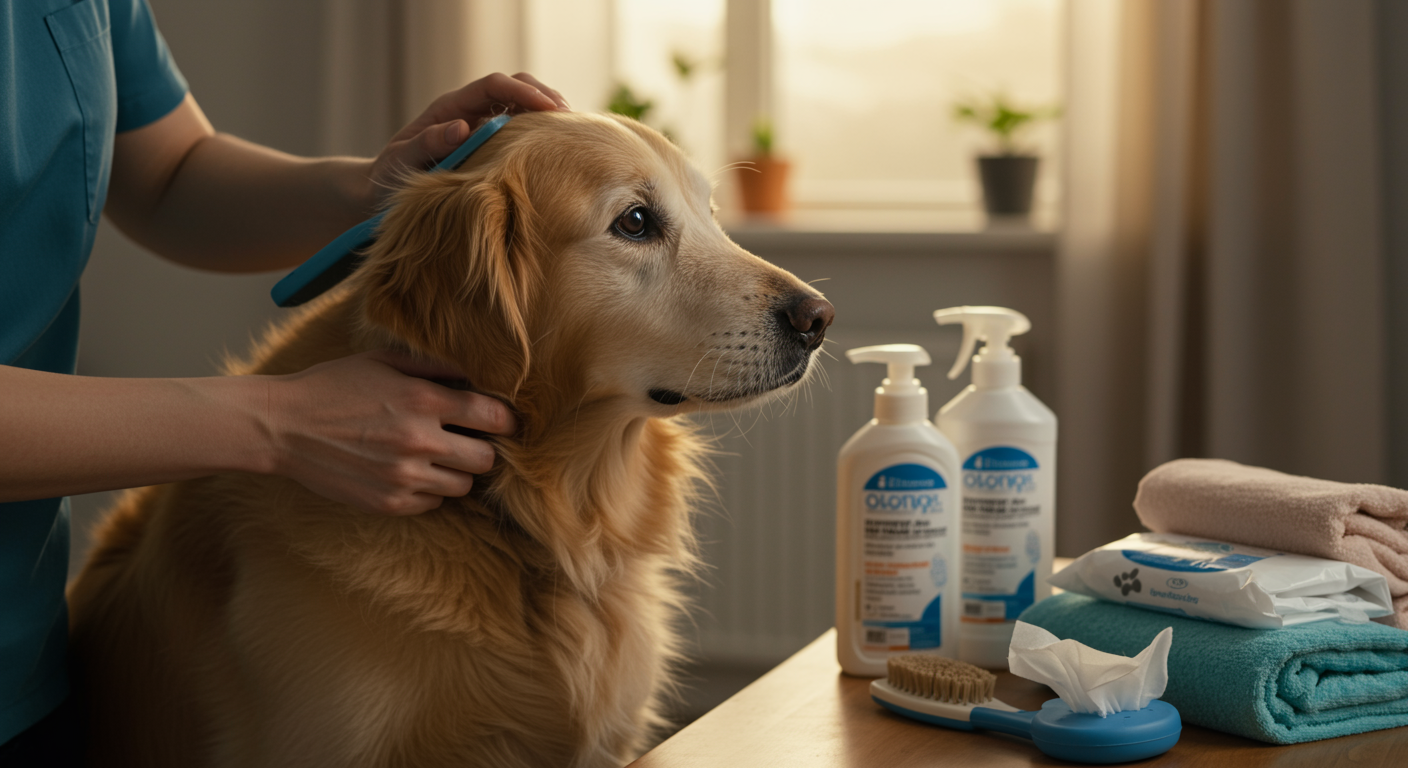Separation anxiety in senior Golden Retrievers presents unique challenges as aging can intensify attachment behaviors, create new insecurities about being alone, and complicate traditional anxiety management approaches due to physical or cognitive changes. Understanding how to recognize and address separation anxiety in older dogs helps families maintain their dogs’ emotional well-being while preserving their own ability to leave home when necessary.
Senior Golden Retrievers may develop separation anxiety for the first time in their later years, or experience worsening of previously mild anxiety as they become more dependent on their families for comfort and security. Physical discomfort, cognitive changes, or health concerns can all contribute to increased anxiety when left alone.
Effective management of separation anxiety in senior dogs requires gentle, patient approaches that build confidence while accommodating age-related limitations and sensitivities. Success comes from understanding individual triggers, creating supportive environments, and implementing gradual training programs that respect the senior dog’s emotional and physical needs.
Understanding Separation Anxiety in Senior Dogs
Age-Related Anxiety Development
Increased Attachment and Dependency
Senior Golden Retrievers often develop stronger attachments to their families as they experience physical changes or health challenges that make them feel more vulnerable and dependent on human care and support.
Understanding that increased attachment is a natural response to aging helps families recognize that heightened separation anxiety may reflect the dog’s need for security rather than behavioral problems requiring correction.
This increased dependency can create a cycle where dogs become more anxious about being left alone, leading to behaviors that increase family concern and potentially reinforce the anxiety through increased attention.
Cognitive Changes and Confusion
Cognitive changes that may accompany aging can contribute to separation anxiety as dogs become more easily confused or disoriented when their routine support systems are absent.
Understanding how cognitive changes affect emotional regulation helps families recognize that separation anxiety may be related to confusion or memory issues rather than simple behavioral problems.
Dogs experiencing cognitive changes may forget that their families will return, making each separation feel uncertain or threatening in ways that didn’t occur when cognitive function was intact.
Physical Factors Contributing to Anxiety
Pain and Discomfort Impact
Physical discomfort from arthritis, dental issues, or other age-related conditions can increase anxiety levels and make dogs more sensitive to stress, including the stress of being left alone.
Understanding the connection between physical comfort and emotional well-being helps families address underlying health issues that may be contributing to or worsening separation anxiety symptoms.
Pain management and comfort support often help reduce overall anxiety levels, making separation anxiety more manageable through comprehensive health care approaches.
Sensory Changes and Insecurity
Hearing or vision changes can make senior dogs feel more vulnerable when alone, as they may be less able to monitor their environment or respond to familiar sounds that previously provided comfort.
Understanding how sensory changes affect security helps families create environments that compensate for these limitations while providing alternative sources of comfort and reassurance.
Dogs with sensory changes may benefit from different types of environmental support, such as consistent lighting or familiar scents that provide comfort when visual or auditory cues are reduced.
Recognizing Separation Anxiety Symptoms
Behavioral Indicators
Destructive Behaviors and Vocalization
Senior dogs with separation anxiety may engage in destructive behaviors such as scratching at doors, chewing furniture, or attempting to escape, though these behaviors may be less intense than in younger dogs due to reduced energy levels.
Understanding that destructive behavior in senior dogs often reflects anxiety rather than disobedience helps families respond with appropriate anxiety management rather than punishment that could worsen the problem.
Vocalization such as barking, whining, or howling may occur when senior dogs are left alone, potentially intensifying as anxiety levels increase and the dog becomes more distressed about the separation.
Physical Stress Responses
Physical symptoms of separation anxiety in senior dogs may include panting, drooling, pacing, or attempts to hide, though mobility limitations may affect how these behaviors manifest.
Understanding physical stress responses helps families recognize anxiety even when behavioral symptoms are subtle or modified by age-related physical limitations.
Some senior dogs may show stress through changes in elimination patterns, appetite, or sleep behaviors that occur in relation to separations or anticipation of being left alone.
Pre-Departure and Return Behaviors
Anticipatory Anxiety Patterns
Senior dogs with separation anxiety often begin showing stress behaviors during pre-departure routines, recognizing cues that indicate their family is preparing to leave.
Understanding anticipatory anxiety helps families identify triggers and modify routines that might be inadvertently increasing anxiety levels before departures actually occur.
These anticipatory behaviors may include following family members closely, seeking extra attention, or showing signs of stress when departure cues such as keys or coats are observed.
Separation Anxiety Management Strategies
| Management Approach | Implementation Method | Timeline | Success Indicators | Adaptation Notes |
|---|---|---|---|---|
| Gradual Desensitization | Very short absences, slow increases | 2-8 weeks | Calm during short separations | Slower progression for seniors |
| Environmental Enrichment | Comfort items, mental stimulation | Immediate implementation | Reduced destructive behavior | Age-appropriate activities |
| Routine Modification | Varied departure cues, calm exits | 1-3 weeks | Less anticipatory anxiety | Gentle, consistent changes |
| Comfort Zone Creation | Safe spaces, familiar scents | Immediate setup | Voluntary use of comfort areas | Accommodate mobility needs |
| Professional Support | Veterinary consultation, behaviorist | As needed | Improved overall anxiety management | Consider medication if needed |
| Family Training | Consistent responses, calm energy | Ongoing | Reduced inadvertent reinforcement | Involve all household members |
Environmental Management Strategies
Creating Secure Comfort Zones
Safe Space Development
Establishing comfortable, secure areas where senior dogs can retreat during separations helps provide emotional security while accommodating any mobility limitations that affect their ability to access comfort areas.
Understanding the importance of choice in comfort areas helps families create multiple options that allow senior dogs to select locations based on temperature preferences, social proximity, or individual comfort needs.
Comfort zones should include familiar bedding, favorite toys, and easy access to water, creating comprehensive support areas that meet both emotional and physical needs during separations.
Environmental Enrichment
Providing appropriate mental stimulation through puzzle toys, treat-dispensing devices, or other engaging activities can help distract from separation anxiety while providing positive experiences during alone time.
Understanding age-appropriate enrichment helps families select activities that provide engagement without being too challenging or physically demanding for senior dogs with potential limitations.
Rotating enrichment items helps maintain interest while providing variety that can help reduce boredom and anxiety during separations of varying lengths.
Sensory Comfort Support
Auditory Environment Management
Background music, white noise, or familiar sounds can help mask external noises while providing consistent auditory comfort that may help reduce anxiety in dogs with hearing changes.
Understanding how sound affects anxiety helps families create auditory environments that support calm behavior while accommodating any hearing sensitivities or changes.
Consistent background sounds can help senior dogs feel less alone while providing auditory comfort that supports relaxation during separation periods.
Scent-Based Comfort
Familiar scents from family members’ clothing or bedding can provide olfactory comfort that helps reduce separation anxiety through the reassuring presence of familiar smells.
Understanding scent-based comfort helps families use natural anxiety-reducing strategies that work with the dog’s natural tendencies while providing non-invasive support.
Rotating scent items helps maintain effectiveness while ensuring that comfort scents remain fresh and meaningful for anxiety reduction.
Training and Behavioral Modification
Gradual Desensitization Programs
Systematic Separation Training
Starting with very brief separations and gradually increasing duration helps senior dogs build confidence while learning that separations are temporary and their families will return.
Understanding that senior dogs may require slower progression helps families maintain patience while building success through incremental improvements that respect individual learning pace.
Systematic training should be adapted for senior capabilities, with shorter training sessions and more frequent reinforcement to accommodate attention span and learning differences.
Departure Routine Modification
Changing departure routines to be less predictable and emotionally charged helps reduce anticipatory anxiety while teaching dogs that departure cues don’t always mean extended separations.
Understanding routine impact helps families identify and modify behaviors that may be inadvertently increasing anxiety levels before departures actually occur.
Calm, matter-of-fact departures help reduce emotional intensity while teaching dogs that separations are normal parts of daily life rather than emotional events requiring distress.
Positive Association Building
Separation Reward Systems
Creating positive associations with alone time through special treats, toys, or activities that only occur during separations helps build anticipation rather than anxiety about family departures.
Understanding positive association development helps families transform separation time into rewarding experiences while providing motivation for calm, independent behavior.
High-value rewards that are only available during separations help create positive expectations while providing comfort and engagement during alone time.
Independence Encouragement
Gradually encouraging independent behavior through training and environmental management helps build confidence while reducing over-dependence that contributes to separation anxiety.
Understanding independence building helps families balance attachment needs with healthy autonomy that supports emotional resilience during necessary separations.
Age-appropriate independence training respects senior dogs’ increased attachment needs while building confidence in their ability to be comfortable when alone.
Medical and Professional Support
Veterinary Consultation
Health Assessment
Comprehensive veterinary evaluation helps identify underlying health issues that may be contributing to anxiety while ensuring that physical comfort supports emotional well-being.
Understanding health impacts on anxiety helps families address medical factors while implementing behavioral management strategies that support overall anxiety reduction.
Pain management, cognitive support, or other medical interventions may significantly improve separation anxiety by addressing underlying factors that contribute to emotional distress.
Medication Considerations
Anti-anxiety medications may be appropriate for senior dogs with severe separation anxiety, particularly when behavioral modification alone is insufficient or when health factors complicate training approaches.
Understanding medication options helps families make informed decisions about pharmaceutical support while ensuring that medical interventions complement behavioral management strategies.
Senior dogs may require different medication considerations due to age-related changes in metabolism or concurrent health conditions that affect drug selection and dosing.
Professional Behavioral Support
Certified Behaviorist Consultation
Professional animal behaviorists can provide specialized guidance for complex separation anxiety cases while developing customized programs that address individual senior dog needs and limitations.
Understanding when to seek professional help ensures that families access appropriate resources before anxiety becomes severe or when home management strategies aren’t providing adequate improvement.
Professional support can be particularly valuable for senior dogs with cognitive changes or complex anxiety presentations that require specialized expertise.
Training Program Development
Customized training programs developed by professionals help ensure that behavioral modification approaches are appropriate for individual senior dogs while maximizing success potential.
Understanding professional training benefits helps families invest in appropriate support while building skills and confidence for long-term anxiety management.
Professional guidance helps families avoid common mistakes while implementing effective strategies that respect senior dog limitations and capabilities.
Family and Lifestyle Adaptations
Household Management
Family Member Coordination
Involving all family members in consistent anxiety management approaches helps ensure that training efforts are reinforced while preventing inadvertent behaviors that might worsen separation anxiety.
Understanding family involvement importance helps create comprehensive support systems while ensuring that all household members contribute positively to anxiety management efforts.
Consistent responses from all family members help senior dogs feel secure while building predictable patterns that support anxiety reduction.
Schedule Flexibility
When possible, modifying family schedules to reduce separation duration or frequency can help manage anxiety while accommodating senior dogs’ increased need for companionship and security.
Understanding schedule impact helps families balance their own needs with their senior dog’s comfort while finding creative solutions that support both human and canine well-being.
Flexible scheduling may be particularly important during initial anxiety management phases or when health changes increase the dog’s need for companionship and support.
Support System Development
Pet Sitter and Care Options
Professional pet sitters or doggy daycare services designed for senior dogs can provide companionship alternatives while reducing separation anxiety during necessary family absences.
Understanding care options helps families find appropriate support while ensuring that alternative care providers understand senior dog needs and anxiety management requirements.
Gradual introduction to alternative care providers helps senior dogs build comfortable relationships while providing backup support for family scheduling needs.
Community Resources
Dog-friendly community activities, senior dog groups, or other social opportunities can help build confidence while providing additional sources of comfort and stimulation.
Understanding community resources helps families access support while building social connections that can benefit both senior dogs and their families.
Appropriate community involvement can help reduce isolation while providing positive experiences that support overall emotional well-being and confidence.
Long-Term Management and Adaptation
Monitoring and Adjustment
Progress Assessment
Regular evaluation of anxiety management effectiveness helps identify successful strategies while recognizing when modifications may be needed to maintain progress.
Understanding progress indicators helps families maintain motivation while adapting approaches based on changing senior dog needs or circumstances.
Objective progress tracking helps distinguish between normal fluctuations and concerning changes that may require additional intervention or professional support.
Adaptation for Changing Needs
As senior dogs continue to age, their anxiety management needs may change, requiring ongoing flexibility and adaptation in management approaches.
Understanding evolving needs helps families prepare for changes while maintaining effective anxiety management throughout the aging process.
Proactive adaptation helps prevent anxiety escalation while ensuring that management strategies remain effective and appropriate for changing capabilities.
Quality of Life Integration
Balance and Perspective
Successful separation anxiety management balances the senior dog’s need for security with the family’s need for flexibility while maintaining focus on overall quality of life.
Understanding balance importance helps families maintain realistic expectations while celebrating improvements and adapting to limitations.
Quality of life considerations help guide decisions about management intensity while ensuring that anxiety reduction efforts enhance rather than complicate daily life.
Relationship Strengthening
Effective anxiety management often strengthens the human-dog bond through increased understanding, patience, and successful problem-solving that benefits both parties.
Understanding relationship benefits helps families maintain motivation during challenging periods while appreciating the deeper connection that can result from working through anxiety challenges together.
Successful anxiety management demonstrates the commitment and love that characterize the best human-dog relationships while supporting continued bonding throughout the senior years.
Managing separation anxiety in senior Golden Retrievers requires patience, understanding, and comprehensive approaches that address both emotional and physical factors contributing to anxiety. Through environmental modifications, gentle training, and appropriate professional support, families can help their senior companions feel more secure and comfortable during necessary separations.
Success in anxiety management comes from recognizing individual needs while implementing consistent, compassionate strategies that respect the senior dog’s increased vulnerability while building confidence and security. With proper attention and support, most senior dogs can learn to cope with separations while maintaining their emotional well-being and family relationships.
The investment in separation anxiety management demonstrates the commitment to comprehensive senior dog care while ensuring that both dogs and families can maintain the flexibility and independence necessary for healthy, balanced relationships throughout the golden years.

Rafael Souza is a digital marketing strategist and lifelong dog enthusiast. Passionate about Golden Retrievers, he shares practical, research-based tips to help owners provide healthier and happier lives for their furry companions.






1 thought on “Managing Separation Anxiety in Senior Golden Retrievers”